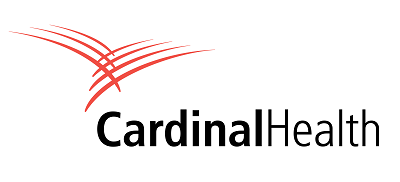As we emerge from the shadow of COVID-19, it’s fair to say that hospital systems in general, and certainly pharmacies in particular, have never faced challenges like those that came with the pandemic.
From an influx of patients that nearly buckled the healthcare system as a whole, to crippling disruptions in the flow of medications and supplies; from debt increases to staffing shortages, the ripple effects from the pandemic are still being felt, especially from a financial standpoint.
The American Hospital Association says healthcare expenses for the past year are up a staggering $135 billion.1 One of the largest contributors of skyrocketing costs has been staff salaries, which shot up by $86 billion between 2021 and 2022.
Following typical patterns, job cuts have followed. The healthcare industry was among the leaders in layoffs over that same time period, shedding more than 62,000 positions,2 and given the losses most hospital systems are facing this year, the trend is likely to continue.
But where those cuts are made matters, and hospital administrators should carefully consider the role pharmacists play in their systems before including their departments in across-the-board layoffs.
Failure to recognize that reality can lead to a series of compounding issues, all of which can inadvertently drive up costs and increase debt.
The Increasing Cost of Care
When hospitals need to lay off workers in order to cut costs, the most vulnerable among pharmacy staffs are technicians. There are, afterall, typically far more technicians in those departments than there are pharmacists.
But their perceived expendability comes at the cost of the pharmacists themselves.
When technicians are cut, that means pharmacists are usually responsible for doing more of the day-to-day work such as ordering medications, stocking supplies or filling dispensing cabinets. That likely means fewer opportunities to work directly with physicians or other medical staff members on patient care and less time to oversee the effective and efficient use of medications throughout the hospital.
It is important to understand that most of the costs associated with hospital pharmacies – and hospital systems as a whole – are not related to labor but to medications.
In fact, drug costs represented the largest increase in hospital expenses during the height of the pandemic, rising nearly 37 percent per patient, compared to only a 19 percent increase in labor costs. 3
And it’s only getting worse.
Just before the onset of the pandemic, prices on many medications that are often used in hospitals began to swell. The pain medication hydromorphone, for example, went up a staggering 107 percent in just a 24 month span, according to a recent drug pricing report.4 That same report found that mitomycin, used to treat various forms of cancers, and vasopressin, an antidiuretic used to regulate kidney function and blood pressure, have both nearly doubled in cost.
Add to that the increasing volume of new and expensive biologic and biosimilar drugs that require strict storage and handling protocols, and it’s easy to see why medications account for substantial costs in hospital systems.
That’s precisely why cutting the pharmacy staff, who is responsible for managing drug costs, can have major consequences.
Additionally, shifting more of the workload to the pharmacists themselves can often lead to higher rates of burnout, more medical mistakes and poorer patient outcomes, all of which can have a serious impact on a hospital’s bottom line.
It’s a grave and growing situation that couldn’t come at a worse time.
The Post-Covid Patient Predicament
In the throes of the pandemic, hospital admissions for COVID-related illness were reaching capacity thresholds, particularly before vaccinations were available, and healthcare systems and patients alike avoided or deferred care for other conditions.
Now, the healthcare system is paying a heavy price for those delays.
Not only are more patients seeking the care they put off, they’re also being admitted to hospitals with more advanced disease states. One recent study found that patient acuity has risen each year since the start of the pandemic, and the average length of hospital stay has gone up by nearly 10 percent.5
These are patients who often require more intensive and specialized treatments and whose medicinal needs are more complex. Unfortunately, they are often being cared for by pharmacists with smaller staffs and fewer resources.
That’s contributing to a higher incidence of burnout among pharmacists and a corresponding rising risk of medical mistakes.
The Fallout from Burnout
During the pandemic there were professionals in certain occupations who were lauded for their vital roles and extraordinary efforts. The term “essential worker” became part of our everyday vocabulary. Doctors, nurses, school teachers and even food producers and grocery store employees were applauded for their heroic efforts to keep our society functioning.
It’s no surprise, given the workloads they assumed, that many of those essential workers experienced burnout. There have been numerous studies about the effects of COVID and the burnout experienced by those who work in fields like medicine and education.
Inexplicably, as noted in a recent publication by the National Institutes of Health,6 there have been comparatively few studies related to burnout when it comes to pharmacists, although it is prevalent, and at alarming rates.
In that publication, researchers conducted a systematic review of studies spanning eight countries and more than 11,000 pharmacists and found that more than half have reported burnout.
Excessive work loads and longer hours were major contributors to reports of burnout, as were higher patient and medication order volumes, all of which are made worse by hospital-wide saving directives to cut pharmacy staff in an effort to reduce costs.
There are no easy answers to the financial dilemmas hospitals are facing, but there are certain moves that can make matters worse.
The High Cost of Cutting Costs Inappropriately
Given that drugs often account for a substantial portion of hospital costs, it only makes sense that administrators would prioritize any efforts to use them in the most efficient and effective ways possible. Any waste or misuse of such costly assets would likely have profound effects on hospital budgets.
Yet too often the pharmacists who are charged with overseeing these assets are asked to do so with less help and fewer resources.
That can lead to a drop in productivity and higher rates of job turnover, and more alarmingly, it can impact patient outcomes, as well.
One recent study estimated there are nearly 200,000 adverse drug events (ADEs) in US hospitals each year, with costs ranging from $871 million up to nearly $2 billion.7
Beyond the number of confirmed ADEs, the study also estimates there were some 79 million alerts of potential mistakes. It’s estimated that pharmacists and clinicians would have had to spend an additional 175,000 hours responding to those, as well.
The human toll of these mistakes and near misses is the most pressing issue, of course, but the financial impact is significant.
It can only get worse by asking pharmacists to absorb more work, while paring down their support staffs even further.
It may seem counterintuitive to consider protecting staff positions (and potentially increase salaries) given the crippling financial burdens facing most hospital systems. Given what’s at stake, however, it’s not hard to imagine how making the wrong cuts in the wrong places could end up costing administrators more than they could ever hope to save.
Citations
- American Hospital Association, Kaufman, Hall & Associates, The Current State of Hospital Finances: Fall 2022 Update, https://www.aha.org/guidesreports/2022-09-15-current-state-hospital-finances-fall-2022-update Published September 15, 2002. Accessed February 20, 2023.
- Challenger, Gray and Christmas, Inc., The Challenger Report: Job Cuts in 2022 up 13% over 2021. https://www.challengergray.com/blog/the-challenger-report-job-cuts-in-2022-up-13-over-2021/ Published January 5, 2023. Accessed February 20, 2023.
- Kaffman, Hall & Associates, National Hospital Flash Report, (p.20). https://www.kaufmanhall.com/sites/default/files/2022-01/National-Hospital-Flash-Report_Jan2022.pdf Published January 2022. Accessed February 20, 2023.
- National Opinion Research Center at the University of Chicago, Recent Trends in Hospital Drug Spending and Manufacturer Shortages (p.14). https://www.aha.org/system/files/2019-01/aha-drug-pricing-study-report-01152019.pdf Published January 15, 2019. Accessed February 20, 2023.
- American Hospital Association, Kaufman, Hall & Associates, Pandemic-Driven Deferred Care Has Led to Increased Patient Acuity in America’s Hospitals, https://www.aha.org/system/files/media/file/2022/08/pandemic-driven-deferred-care-has-led-to-increased-patient-acuity-in-americas-hospitals.pdf Pbulished August 2022. Accessed February 20, 2023.
- Dee J, Dhuhaibawi N, Hayden JC. A systematic review and pooled prevalence of burnout in pharmacists. Int J Clin Pharm. 2022 Nov 29:1–10. doi: 10.1007/s11096-022-01520-6. https://www.ncbi.nlm.nih.gov/pmc/articles/PMC9707850/ Published November 2022. Accessed February 20, 2023.
- Sarah P Slight, Diane L Seger, Calvin Franz, Adrian Wong, David W Bates, The national cost of adverse drug events resulting from inappropriate medication-related alert overrides in the United States, Journal of the American Medical Informatics Association, Volume 25, Issue 9, September 2018, Pages 1183–1188, https://doi.org/10.1093/jamia/ocy066 Accessed February 20, 2023.




















